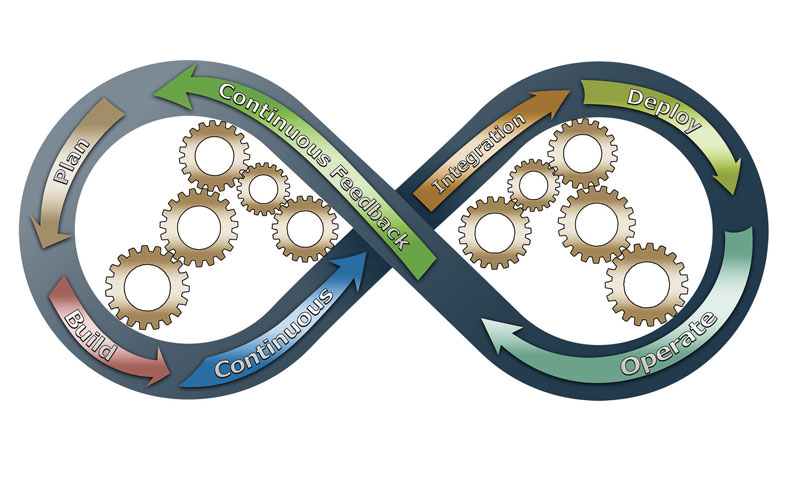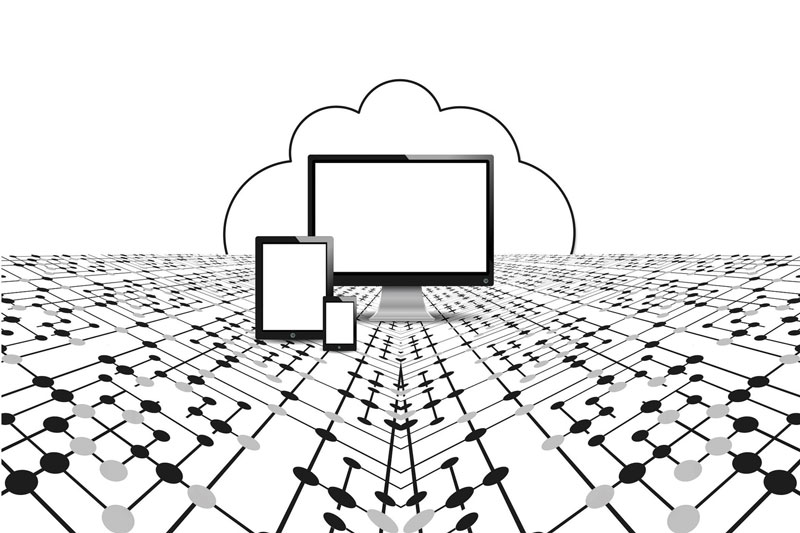Industry 4.0 and Integrated Environment
The premise of the evolution driven by Industry 4.0 is that the resources in a manufacturing company are intelligent, networked and integrated. Communication therefore plays a fundamental role and must cover the entire production environment
In traditional manufacturing companies, uncertainty in communication leads to misunderstandings and inefficient workflows, unforeseen events cannot be immediately factored into the production schedule, and adjustments require high costs or efforts in any case due to low flexibility. The need therefore arises for better horizontal and vertical integration, which, in view of Industry 4.0, takes on the importance of a real backbone in the Smart Factory.

Four different integration scenarios
Integration can be horizontal or vertical, and external or internal. Four scenarios are therefore possible. In particular, external horizontal integration implies the connection of all parts of the supply chain. In this way, a company horizontally integrated in the supply chain can focus its activities around its core skills, and connect to external partners to build an end-to-end value chain where all companies within the network exchange data with each other.
Internal horizontal integration, on the other hand, allows for the creation of a cohesive system at different levels of the enterprise. For instance, in production departments, machines and production units which are always connected become objects with well-defined properties within the network. Each element of the system can constantly communicate its performance status, and respond autonomously to changing production requirements, thus improving visibility, flexibility and productivity.
External vertical integration is a strategy whereby a company owns or controls its suppliers, distributors or outlets to control its value or supply chain.
Finally, internal vertical integration aims to unite all logical levels within the organisation, from production to research and development, quality assurance, product management, data management, sales and marketing and so on. In other words, operational technology (OT) at production level converges with information technology (IT) at company level. Data can flow freely and transparently between the different levels, enabling ‘data-driven’ strategic and tactical decisions to be made.

Integration in the industrial enterprise
If we consider the need for internal integration, we can see that the rational integration of all the components of the production process represents one of the greatest challenges for any industrial enterprise. Often enough, the efficiency of individual machines and plants is not sufficient to achieve the levels of timeliness and quality (competitiveness) which the market demands.
The flow of materials, machining and information, market fluctuations and relations with the outside world of suppliers are therefore some of the elements on which the company must focus, beyond the optimisation of individual stages of the production process.
This can only be achieved by promoting integration within the different levels of the company (horizontal integration) and between the levels themselves (vertical integration). Integrated automation, based on the reorganisation of activities, the elimination of redundancies and waste, and the creation of an information system covering all levels of the company, is the company’s final and most ambitious objective. Its achievement is now greatly helped by the introduction of microelectronic and IT technologies oriented towards the industrial environment.
Cloud computing solutions
In general, the integration of management and production processes in the factory requires the transfer of large flows of data and information, from individual design/engineering/production systems to decision and management centres. The importance of technologies such as fieldbus systems, industrial networks, IoT and IIoT technologies and so on is therefore obvious.
Meanwhile, new possibilities, such as cloud-based integration, have come into play. The centralised nature of cloud computing solutions provides an excellent platform to address the many challenges which industrial automation systems must face. Cloud computing in industrial automation systems makes it possible to improve data analysis (because planning calculations are performed in real time and with sufficient processing resources to handle the required analysis) and enhance cyber security measures, because industrial cloud computing technology provides a centralised environment where the most sensitive data sets can be stored.

A multi-level model
Following a well-established classification, four basic levels can be distinguished, which must be integrated both individually (horizontal integration) and with each other (vertical integration). The first level is that of the simplest automation components. It consists of all the sensors and actuators, that is, the field devices directly interfaced to the production process and forming the input/output part of the control system. This level reports process measurements to the level above and implements the commands it receives. The level of intelligence required of field devices is limited, as they only need to convert physical quantities of various kinds (such as, temperature, pressure, voltage, and so on) into typically electrical signals and vice versa. However, there is a growing tendency to provide sensors and actuators with local intelligence and a communication interface in order to promote horizontal integration within the level.
At the next level there are the controllers required to manage a simple machine or process. The second level therefore consists of the controllers, interfaced with the sensors and actuators of the first level within a certain production unit. Level 2 equipment is typically PLCs, DCSs, industrial PCs, PACs and CNCs. The functions assigned to machine control are the direct regulation of variables, the sequential execution of operations and so on; these operations must be coordinated with those assigned to the other machines in the production unit.
The third level is the supervision of a line comprising several machines and/or stages of the production process. The controllers at this level regulate the operation of all the machines making up a work cell or a production line through communication with the relevant controllers. Operations carried out at this level are similar to those of the second level, only more complex and with a greater range of variety and dimensions.
Finally, at the fourth level we find the global management of production: operational management in the sense of setting the batch to be produced or the processing cycles, management of alarm situations, analysis and reporting of results, and more. The real-time processing requirements are lower; the functions of this level are in fact performed by systems that work on time horizons and with objectives that are completely different from those of the levels below. On the other hand, the response times of the entire system for detecting and reporting alarm situations are very important.
Other higher levels may be used to represent the coordination of several production sites and/or company management systems.

Conclusion
The creation of an integrated environment requires the complete management of the different automation structures and their ability to communicate. Communication is therefore an essential prerequisite for the development of the integrated factory and must involve all the subsystems present, characterised as they are by great typological and functional variety. Indeed, communication must fully cover the entire production environment, from on-board machine sensors to information systems for production planning and company management systems.

